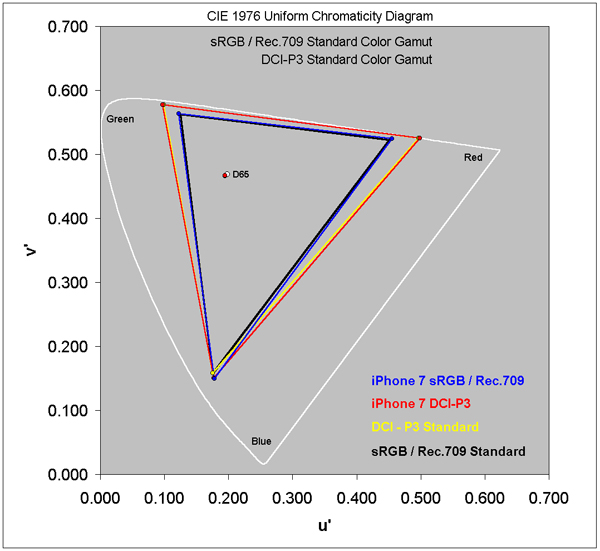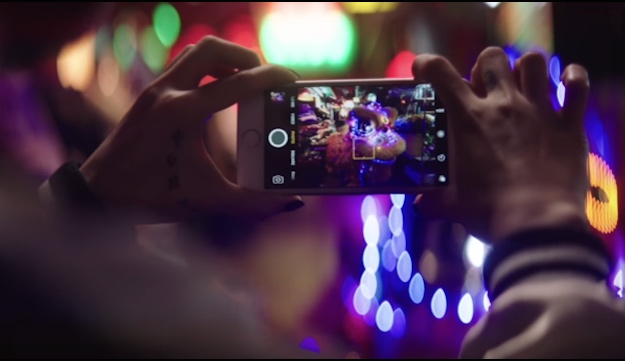On paper, the iPhone 7 screen looks like the same thing that came before: same screen technology, same pixel count, same size. But top-level stats aren’t everything, and a deeper dive into the technology behind the new display and the results it gives tells a rather exciting story.
DisplayMate Technologies has been doing thorough analysis of iPhone screens since the early days of smartphones. This year, they put the iPhone 7 through the same battery of tests to find out how the older LCD technology stacks up against the newer competition.
DON’T MISS: iPhone 7 vs. Galaxy Note 7 speed test: This is just embarrassing…
One of the first new major differences is the addition of two new color gamuts, which helps accurately display different kinds of content. In addition to the standard RGB gamuts found in most phones, the iPhone 7 adds support for DCI-P3 Wide Color Gamut and sRGB / Rec.709 Color Gamut. According to DisplayMate’s testing, the iPhone 7 display hits 102 and 104 percent accuracy with those gamuts respectively, and switches easily between them.

Bottom line for you is that pictures and movies should display on your phone more accurately. You know how things just look better at a movie theater, where the projector has been correctly calibrated? The iPhone 7 is one of the closest smartphones to that experience yet.
One of the other new features that piqued my interest was automatic peak brightness. On manual settings, the brightest the iPhone 7’s display will go to is about 600 nits, pretty average. But on automatic brightness, it will go as bright as 700 nits when there’s lots of ambient light. That, combined with a low amount of glare, makes it particularly easy to see the phone’s screen in direct sunlight.
Limiting the brightness in manual mode is a smart move, as leaving the screen permanently on 700 nits would destroy battery life. But when the phone is allowed to control the setting, it just makes it easy to use the phone outdoors.
More good news comes in the form of display accuracy testing. Very simply, this is how well the colors on screen match the intended colors. DisplayMate describes the iPhone 7’s performance as “Truly impressive…the most color accurate display that we have ever measured. It is Visually Indistinguishable From Perfect, and is very likely considerably better than any mobile display, monitor, TV or UHD TV that you have.” High praise indeed.
Less immediately interesting, but important for the long-term development of the iPhone line, is the display’s power efficiency. The iPhone 7 boasts an extra hour or two of battery life over the iPhone 6, and the screen is a major part of that. DisplayMate calculated the iPhone 7 is 7 percent more efficient in that regard than the 6, a small but important change.
You can find the full battery of tests over on DisplayMate’s blog, but the bottom line is that the iPhone 7 display is a home run. It has a wide range of color gamuts, fantastic accuracy, great viewability, and slightly better power efficiency.
What’s even more impressive is all that is achieved with an LCD panel, a technology that’s far from cutting edge. With Apple strongly rumored to move to OLED screens for the next iPhone, it’s time to get excited for the best smartphone display in the world to get even better sometime soon.










